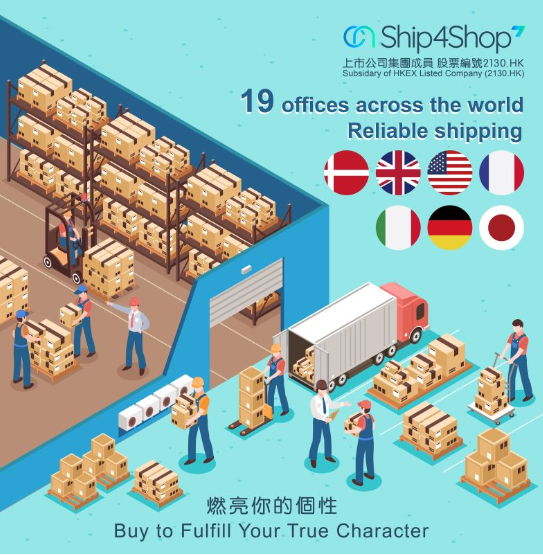
Much of the success of logistics procedures depends on planning. In this sense, planning the route of deliveries to be carried out by the company in a certain period of time allows increasing their efficiency, reducing errors and optimizing them financially.
Some simple principles can be adopted by the operations team, in order to find satisfactory solutions regarding the routing and scheduling of deliveries.
Check out some tips that can make great contributions to the development of efficient routes and schedules in your company:
7 steps to improve your delivery scripts
1. Watch out for nearby stops
Organizing a delivery route based on the grouping of stops located closest to each other is a great solution to minimize the traffic time between them. Try to load trucks with volumes to be delivered to nearby destinations.
2. Make a weekly plan
Stops to be made on different days must also be grouped in order to avoid overlaps in the itineraries. So, given the need to make different stops on different days of the week, try to schedule each one of them, segmenting the itineraries and combining the destinations.
3. Start at the farthest stop
Starting the planning of itineraries by the stops furthest from the depot is a good tip for developing more efficient itineraries. Select these stops and group the others around them according to the load of the vehicle used for the delivery.
This measure contributes to the planning of clusters, minimizing travel times and distances to be covered.
4. Build teardrop-shaped scripts
When looking at delivery vehicle routes on a map, it is ideal that the sequenced waypoints take the form of a droplet. Except in cases where there are time restrictions or stops for collection, this method avoids overlapping routes.
5. Use the biggest vehicles available
The ideal for planning an efficient delivery route is to adopt a single vehicle capable of serving all stops. Thus, allocating vehicles with greater capacity is a good tip to minimize the distances to be traveled and the total time for making deliveries.
6. Combine pickups on delivery routes
Pickups tend after all deliveries have been made, when stops are served. Ideally, however, they should be carried out throughout the course of the script, in order to minimize overlaps.
7. Adopt alternative means of delivery
It is often interesting to evaluate the possibility of adopting an alternative means of delivery for stops that are far outside the planned route groupings. Mainly for those with smaller volumes, smaller vehicles can be adopted, or even outsourced companies can be hired. Therefore, try to evaluate, for specific cases, the economic viability of this option.
Learn how to evaluate your logistics providers
The outsourcing of transport generates CNShip4Shop several benefits, one of which is to make the company, as an industry, distributor or e-commerce, focus more on its segment, whether to improve products or to develop processes. However, to ensure good conditions in the services, it is essential to evaluate the logistics providers.
The carrier, for example, is the type of supplier responsible for transporting inputs into the factory and distributing the goods to customers, so its involvement in a company’s logistics generates the need for evaluations to measure its performance.
Do you want to better understand how this assessment works and how to put it into practice to optimize the success of your company’s transport sector?
What is the importance of evaluating logistics providers?
It is from the evaluation of logistics providers that companies are able to measure the performance of a carrier that is responsible for delivering their goods.
This type of supplier is an extension of the company that hired it, as the carrier has contact with the shipper’s customer through the delivery service. Therefore, carrying out the evaluation process is important not only to measure operational performance, but also to guarantee the image of the shipping company.
How to evaluate logistics providers?
1. Company performance
Some logistics indicators , also known as KPIs ( Key Performance Indicator = Key Performance Indicators) of Logistics, can be taken as a basis in this stage of evaluating the company’s performance, such as the evaluation of customer feedback.
Other indicators are: knowing if there was quality in the separation of orders (if there are errors, malfunctions), how long it took to process the order, if there was a delay in delivery, etc. The ideal is to evaluate all this and weigh whether the supplier’s performance is good, so the company will have more profit and positive feedback.
Check out 5 logistical indicators that can contribute at this stage:
Inventory Turnover — Helps to identify how many times the company’s inventories were used per period, which increases the efficiency of their management.
Distribution — Measures distribution efficiency. This indicator can be calculated in several ways, such as from the productivity on the volume moved in the company or through the percentage of space utilization in the warehouse.
Transport — The indicator reveals the productivity and quality of the transport of goods, being very useful when hiring an outsourced carrier.
2. Shipping price
Cargo transport is one of the main costs of a company that works with the production and distribution of goods. Therefore, the contracted freight value deserves full attention when evaluating logistics providers such as the carrier.
Since the outsourced service seeks to reduce the contractor’s expenses, it is important to pay attention to the following costs that involve freight: freight cost per customer and per product, cost per kilometer traveled, cost of exchanges and returns, as well as re-deliveries, damages and misplacements.
In addition to these costs, the lack of checking invoices and other documents generated by the logistics provider impact the sector’s expenses, thus causing avoidable expenses.
3. Occurrences
Incidents can happen during cargo transport, the main ones being: heavy traffic, accidents, delays, retention at tax offices, route deviation, theft and robberies. However, what often differentiates one carrier from another is the way in which it gives feedback on what happens to the goods while transporting.
Considering that the pandemic has accelerated the changes involving both consumer behavior and their expectation in the delivery service, investing in carriers that map the entire route to the contractor and that also return on occurrences is an evaluation point that can be decisive.
Keeping track of these situations helps to keep the customer informed about any possibility of delay in delivery, making your company more credible and transparent as possible.
4. Customer Rating
This is one of the best ways to avoid/fix errors at the moment and after hiring suppliers : always follow your customers’ feedback about the carrier, after all, no one better than the person who bought the product and went through the delivery experience to make a full service evaluation.
5. Delivery deadlines
Respect for delivery deadlines is paramount and the supplier must be able to meet the deadline established by the company so that it does not interfere with its planning.
There are even indicators that help to assess delivery performance, such as On Time In Full (OTIF) , which also helps to increase customer satisfaction. In this way, it is possible to better manage suppliers and, with that, make more assertive decisions.
It is worth mentioning that this indicator also brings a number of benefits, such as:
Improves the management of contracted carriers;
Improves customer perception of delivery efficiency, even if outsourced;
It helps to reduce transportation expenses, when delays and incorrect deliveries are reduced.
6. Expectations about the service
It is important that the supplier is aware of the company’s needs, in the same way that it knows the supplier’s purposes and way of working.
Tool to evaluate your logistics providers
To optimize the process of evaluating logistics providers, it is always good to have a freight management tool capable of offering all possible features to control outsourced deliveries.
The 3PL system is a great solution for managing carriers, since the company can manage the various stages of outsourced transport through the platform and also measure the performance of outsourced partners through reports with the main Logistics KPIs.
Check what is available in the system:
Automatic quotation with carriers already registered in the system and with companies registered in the public freight platform.
Electronic request for collection of goods
Real-time monitoring of deliveries via application for the driver and system for the logistics manager.
Freight audit to check invoices and CTs in order to avoid overpayments;
Operations performance report based on the main logistical indicators.
With 3PL, the company has a broad view of the performance of carriers, which allows the logistics manager to make strategic decisions regarding the contracting and management of their logistics suppliers.

